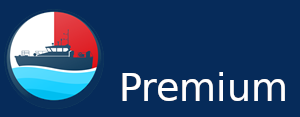Video How Ship Anchor Works? - Procedure For Anchoring a Ship at Sea
published on 11 July 2020
#Anchor #shipanchor #windlass Anchoring is one of the very frequent operations onboard ships. A number of variables and external factors influence the duration and location of an anchoring operation. While the type of seabed is of utmost importance during anchoring, soft muddy grounds or clay bottoms are best preferred. It should be taken care that the anchoring bottom is free of power lines, submarine cables, pipelines or rocks. Various methods on anchoring include consideration of...
Video How port pilot sail out ship from the port? Grimaldi lines catania roro ship
published on 22 April 2022
Article Pilots and VTS operators working together to improve maritime safety
published on 2 February 2022
Video Technical Seminar - The role of the Habourmaster by The Nautical Institue
published on 29 November 2022
Video ETA and EMPA Efficient and safe towage operations
published on 31 August 2022
The European Tugowners Association in collaboration with the European Maritime Pilots Association has produced this informative video on efficient and safe towage operations. These guidelines address the main factors affecting the safety of harbour towage operations such as good communications between pilots, ship captains and tugmasters.


